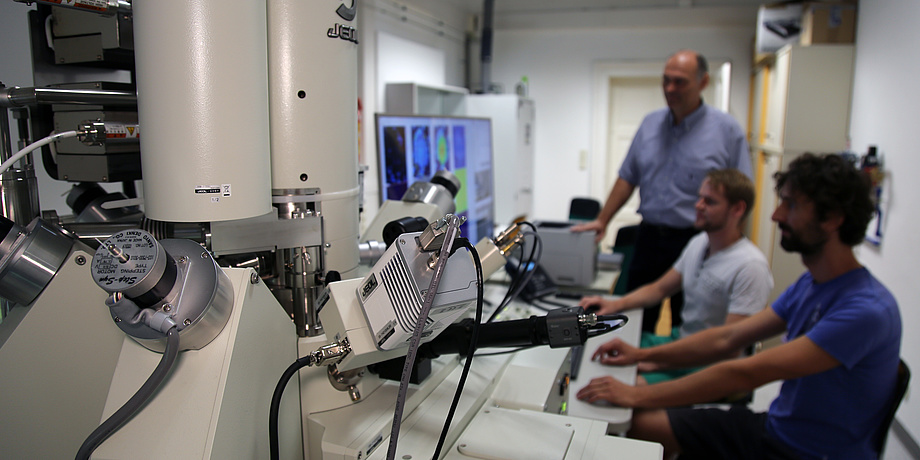The wafer-thin black flake shines like a flattened precious stone. The flake is locked in a silver sample container sitting on a clean tray waiting to be pushed into a large machine on the opposite side of the lab. The machine is a field emission microprobe and the sample is a piece of concrete. After being ground with diamond powder and coated with carbon, even something as hum-drum as this takes on a beautiful appearance.
Of course, this process is about more than just aesthetic appeal, as Florian Mittermayr of the Institute of Technology and Testing of Construction Materials at TU Graz explains: “We need to prepare our samples meticulously so that they can be accurately analysed.” The samples are precisely ground so that their surfaces can be correctly measured. The carbon coating makes the sample’s surface conductive, and it can then be examined using an electron microscope. But a field emission microprobe is capable of much more than a conventional electron microprobe. “This allows us to zero in by additional orders of magnitude,” smiles Christoph Hauzenberger of the Institute for Earth Sciences, who heads the lab on behalf of the University of Graz.
Switch to the Planet research article in the TU Graz News+Stories to learn, why the field emission microprobe comes into its own, when standard microprobes and scanning electron microscope are stretched to their limits.
